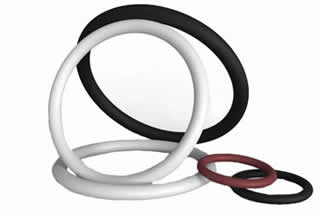
You can’t choose the right O-ring without considering the size. O-rings are mechanical seals that feature a circular, ring-like shape. They are typically used to seal mating surfaces. Even when exposed to pressurized liquid or gas, O-rings will continue to seal the mating surface with which they are used.
O-rings, however, are available in different sizes. Some of them are bigger than others. Whether you’re planning to use it on a coolant line, gas line, air line or any other pressurized line, you’ll need to choose an O-ring in the right size.
Inside Diameter
Inside diameter is exactly what it sounds like: the inner diameter of an O-ring. All O-rings have an inside diameter. It represents the distance from the inside of an O-ring — at the O-ring’s widest section — to the opposite side.
O-rings with a large inside diameter can accommodate larger lines than those with a small inside diameter. They consist of a larger, wider ring-shaped mechanical seal. You can place these large O-rings around equally large pipes, hoses and lines.
Cross Section
In addition to inside diameter, there’s cross-sectional width. The cross section is the width of an O-ring. It represents the thickness of the tangible part of an O-ring. The cross section doesn’t take into account the inside diameter. Instead, it focuses specifically on the physical part, which is the rubber or elastomeric ring.
The cross section width of an O-ring will almost always be lower than the inside diameter. The inside diameter covers the entire distance across the center of an O-ring. The cross section, on the other hand, only covers the distance across the physical part of an O-ring. Therefore, most O-rings have a much smaller cross section than inside diameter.
Aerospace Standard Sizes
When shopping for O-rings, you may see a dash number for its size. Most O-rings use the Aerospace Standard 568 sizing specification. Published by the Society of Automotive Engineers (SAE), it uses a set of numbers to define O-ring sizes.
The Aerospace Standard 568 simplifies the process of evaluating O-ring sizes. Each O-ring is given a dash number. You can refer to these dash numbers to find the inside diameter and cross section of O-rings.
In Conclusion
O-rings are available in different sizes. When shopping for an O-ring, you should pay attention to the inside diameter and cross section. The inside diameter represents the distance across the inner section of an O-ring at its widest point. The cross section represents the thickness of the elastomeric ring.
